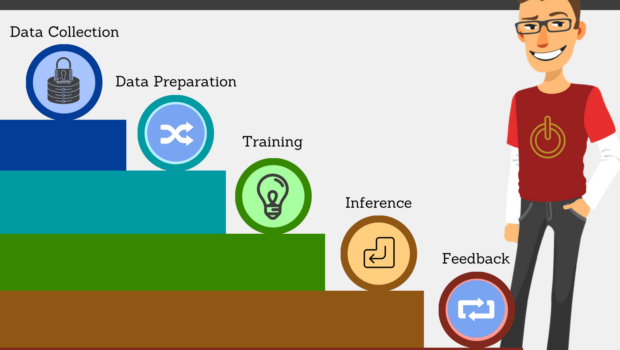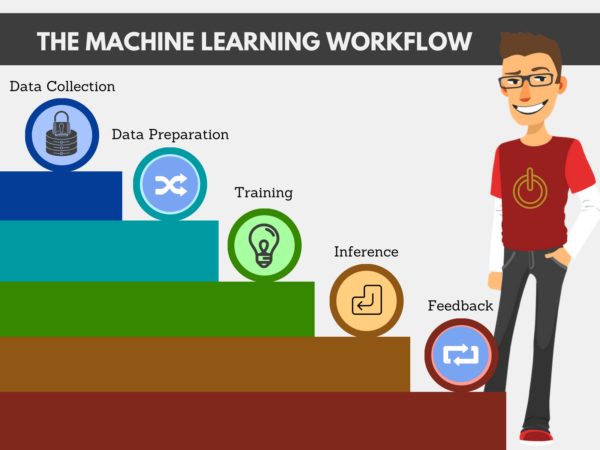Machine learning: What business analysts and developers need to know
There is something else entirely to a fruitful utilization of machine learning than data science.
Machine learning is undergoing a revolution in view of new advancements and strategies. It is a procedure of utilizing an application to create abilities – like the capacity to tell spam from attractive email – by investigating data instead of programming the exact steps, Liberating the person from desiring to make every decision approximately how the algorithm works. Machine Learning is a powerful device, now not only best due to the fact over a million humans consciousness on long programming steps every day, however also as it sometimes finds higher answers than humans engaged in manual attempt.
Machine Learning has programs in maximum industries, wherein it provides a tremendous opportunity to improve upon present processes. But, many corporations are suffering to hold up with the improvements. Searching professional scientists is hard, sure, but the competencies shortage does not tell the complete tale, in particular for organizations that have made investments but not found out their capability. The most considerable barriers are associated with scientists with the talents to enforce the strategies and commercial business leaders who can pressure important organizational modifications.
Machine Learning in an Organization
Making Machine Learning a hit in an agency or organization requires a holistic method that includes specialists and non-experts alike. It requires focusing the enterprise, analyzing business enterprise instances to determine where system studying can add price, and handling the risks of a brand new methodology. For example, a data science team may be interested in using machine learning but select not to do so because of time constraints, threat aversion, or loss of familiarity. In these conditions, a better technique can be to create a separate task, with a focus on developing a foundation for future initiatives. As soon as the organisation has running examples of Machine Learning, the bar for future implementations is substantially decrease.
The implication is that, non-specialists in an organization need to take part in the machine learning vision to make it a success, and this starts with a simple understanding. Gaining knowledge of the analysis and math behind data science takes years, but it is critical for business leaders, analysts, and developers to at least understand where to apply the era, how it is carried out, and its simple principles.
The usage of machine learning requires a distinct way of approaching a problem: You allow the machine learning algorithm resolve the hassle or problem. This is a change in mindset for humans similar with thinking through Purposeful steps. It takes some belief that the system studying application will produce results and an understanding that patience may be required.
How Effective is Machine Learning and Deep Learning
Why is machine learning so effective? There are many extraordinary tactics (facilitated by algorithms) for making machine learning work, which i will explain in detail below, but the ones at the main area use neural networks, which contribute a shape just like that of a biological mind. Neural networks have a couple of layers of connectivity, and when there are numerous complex layers it is called as a deep neural network.
Deep neural networks have had limited achievement until lately, when scientists took gain of the GPU typically used for showing 3D pix. They realized that GPUs have a huge quantity of parallel computing strength and used them to train neural networks. The effects were so effective that incumbents had been stuck off guard. The procedure of training a deep neural network is referred to as Deep learning.
Deep learning getting of age in 2012 while a Canadian team entered the primary trained GPU neural community set of rules right into a main photo identify contest and won the competition by way of a huge margin. The next year, 60 percentage of the entries used deep learning, and the following year (2014), almost everyone used it. The japanese coverage agency, AXA, changed into able to growth its assumption rate of spontaneously accidents from 40% to 78% by means of making use of a deep learning model.
Supervised learning and unsupervised learning
At a basic stage there are two forms of machine learning: one is Supervised learning and other is unsupervised learning. Once in a while these kinds are broken down further (ex. semi-supervised and reinforcement learning).
The machine learning workflow
The implementation of a machine learning model includes some of steps beyond actually executing the algorithm. For the process to work at the scale of an organisation, business analysts and developers have to be involved in certain number of steps. The workflow is regularly known as a lifecycle and may be summarized with the following five steps. Be aware that few steps do not follow to unsupervised learning.
- Data Collection: For well functioning of deep learning, you want a large amount of correct and constant information. Sometimes information needs to be collected and related from separate resources. Even though this is the initial step, it’s far often the maximum tough.
- Data Preparation: In this step, an analyst determines what elements of the data could be inputs and outputs. As an example, if you are trying to determine the probability of a client to cancel a carrier, you then might join separate units of data collectively, pick out out the applicable signs that the model would need, and clear up ambiguities in those signs.
- Training: In this step, experts take over. They pick the pleasant algorithm and iteratively tweak it while evaluating its expected values to actual values to peer how nicely it works. By considering the type of learning, you can assume to know its level of accuracy. In case of Deep learning, this step may be computationally extensive and require many hours of GPU time.
- Inference: If goal was for the model to make an assumption, then the model can be implemented so that it reacts fast to queries. You provide it the equal inputs as you chose at data preparation except that the output is a prediction.
- Feedback: That is an optional step, in which statistics from the inferencing is used to update the version so its accuracy may be improved.
Conclusion
By considering the correct platform for developers and business analysts is very important, because some machine learning workflows can create narrow junction between data science teams and business users. As business analysts and developers get to grips with the techniques, they will know the need and learn to implement those concepts to solve real-world scenarios for ML applications.
Author bio:
Azharuddin is working as a Technical Content Contributor & SEO Analyst for Mindmajix. He holds a Bachelor’s degree in Computer Science & Engineering from JNTUA University. He can be contacted at [email protected]. Connect with Azharuddin on Facebook and LinkedIn.
















